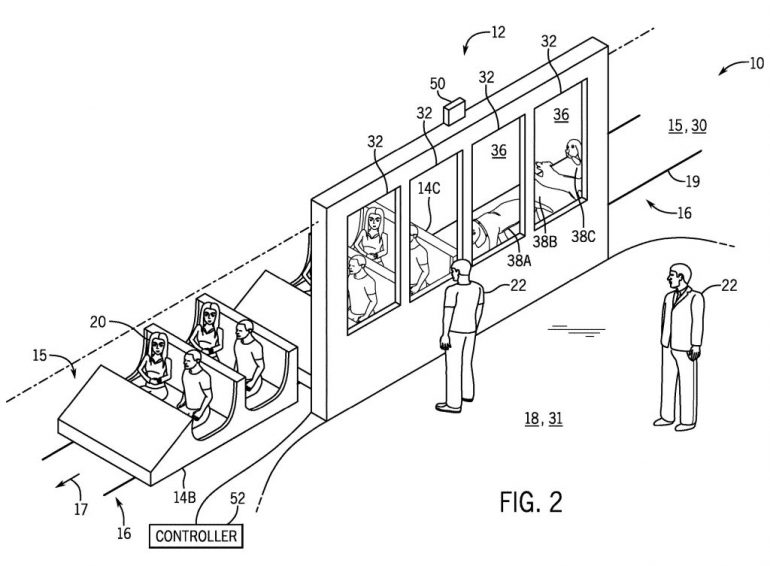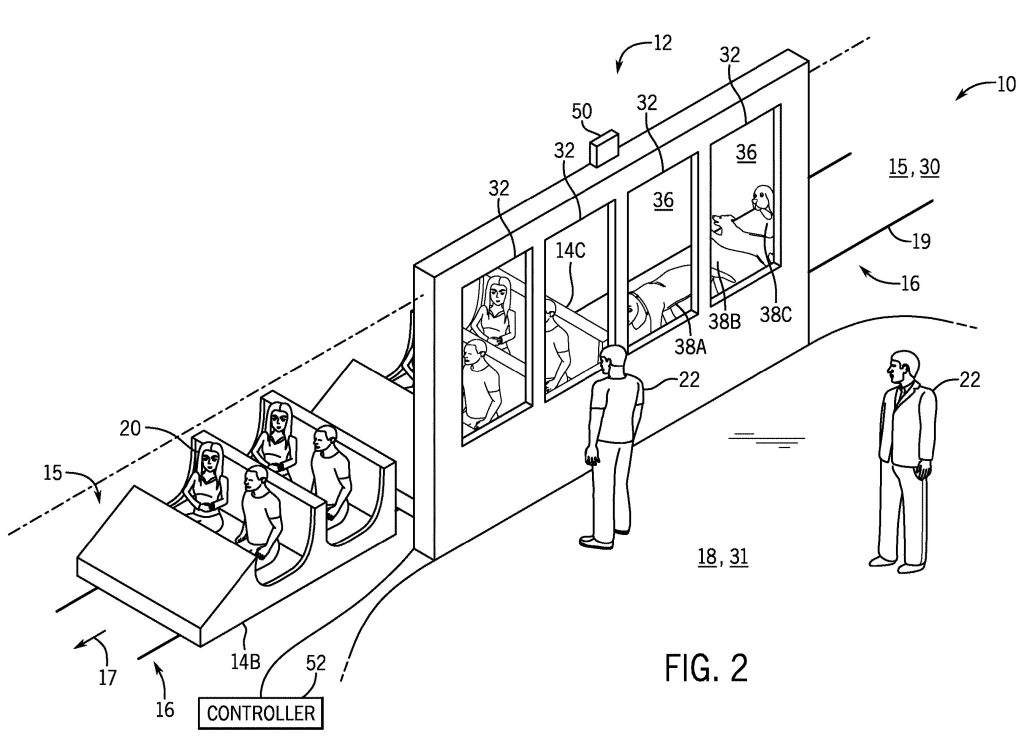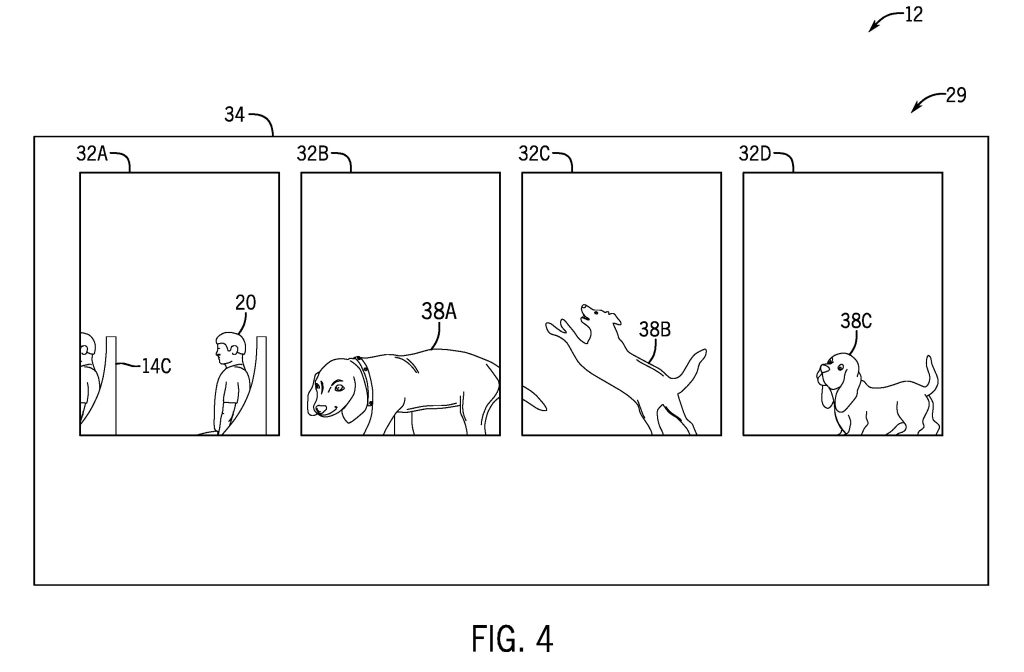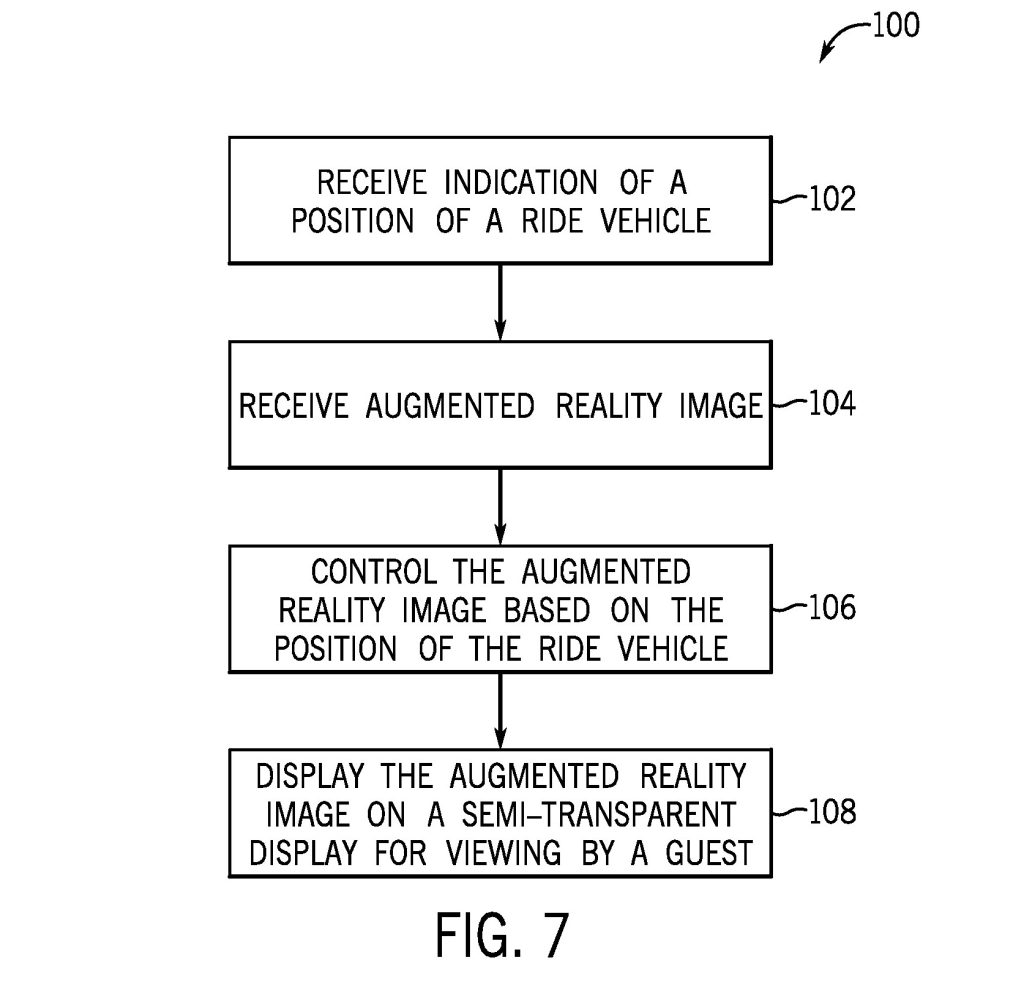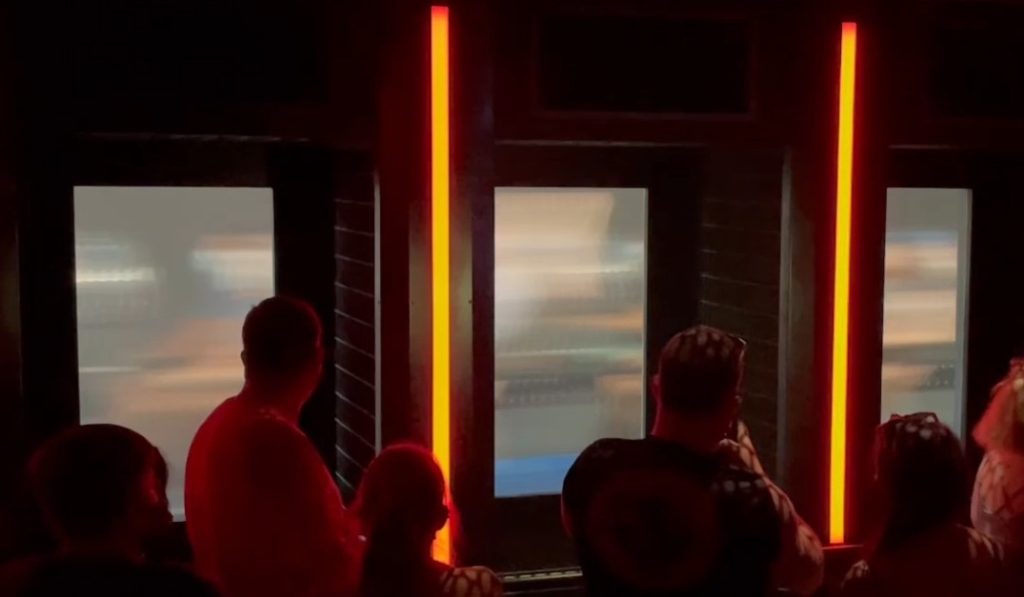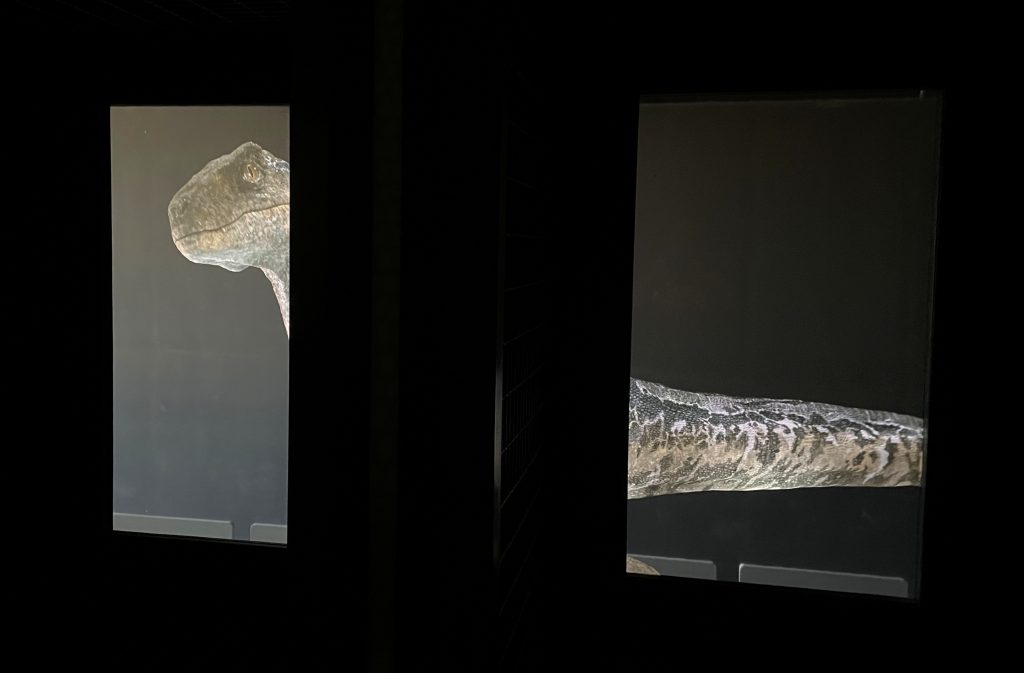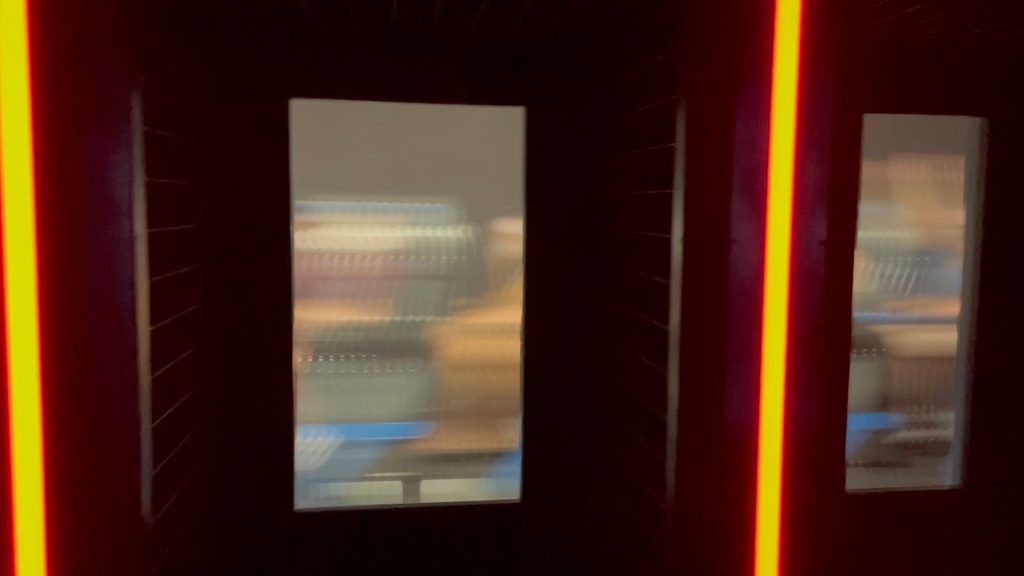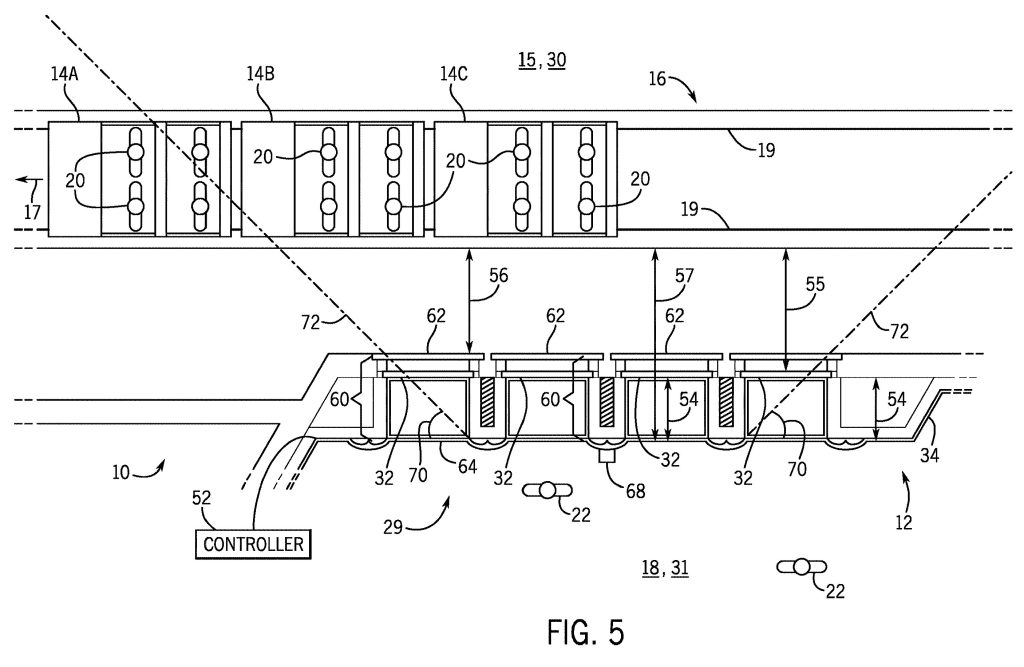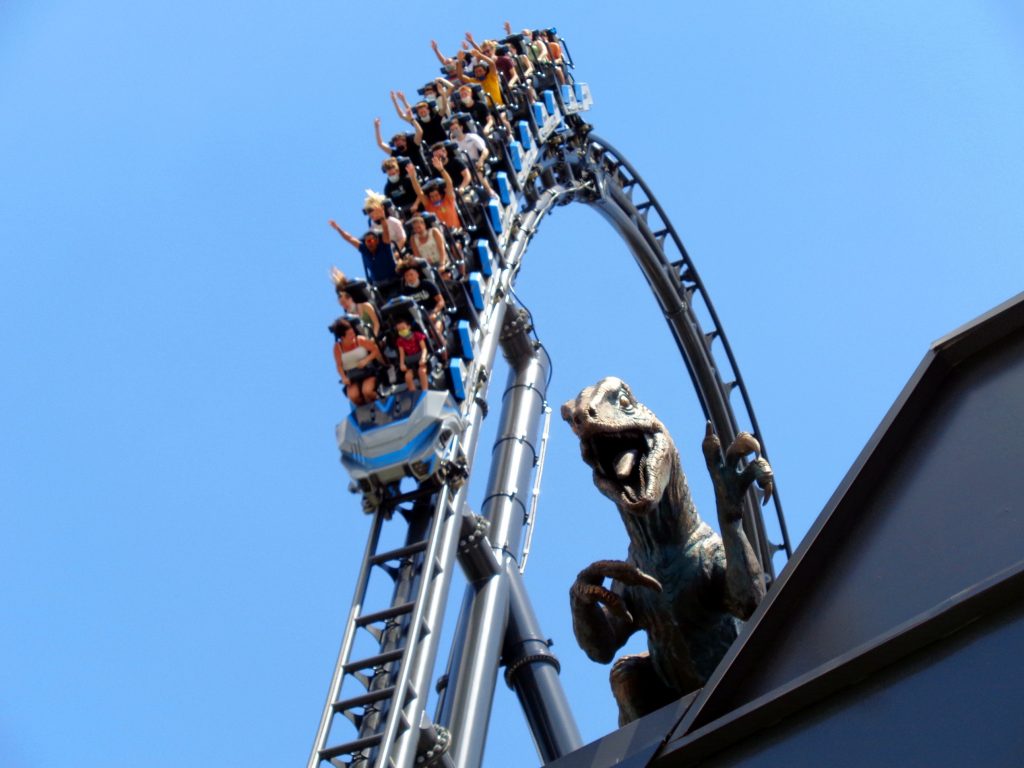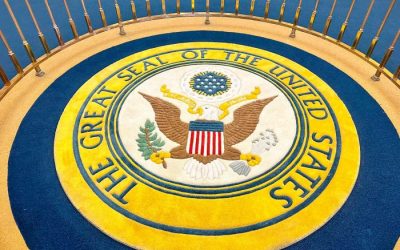The Jurassic World VelociCoaster at Universal’s Islands of Adventure not only offers some of the best thrills in Central Florida, but the attraction’s overall experience is the complete package, featuring immersive theming and some high-tech wizardry.
One of the most impressive effects involves a series of windows where guests waiting in line get to see the actual coaster train zoom by at 70 miles per hour, followed by computer generated Velociraptors chasing after it.
Using behind the scenes information and publicly available patents, we can learn more about this first-of-a-kind special effect, and dig into just how impressive the technology behind it is.
Since this new roller coaster opened last summer, we’ve talked about the real-life science that inspired the ride’s lighting package, as well as many of the hidden Easter eggs that can be found on the ride and in the queue. Now, we’re digging deeper into one of the most impressive effects at the attraction.
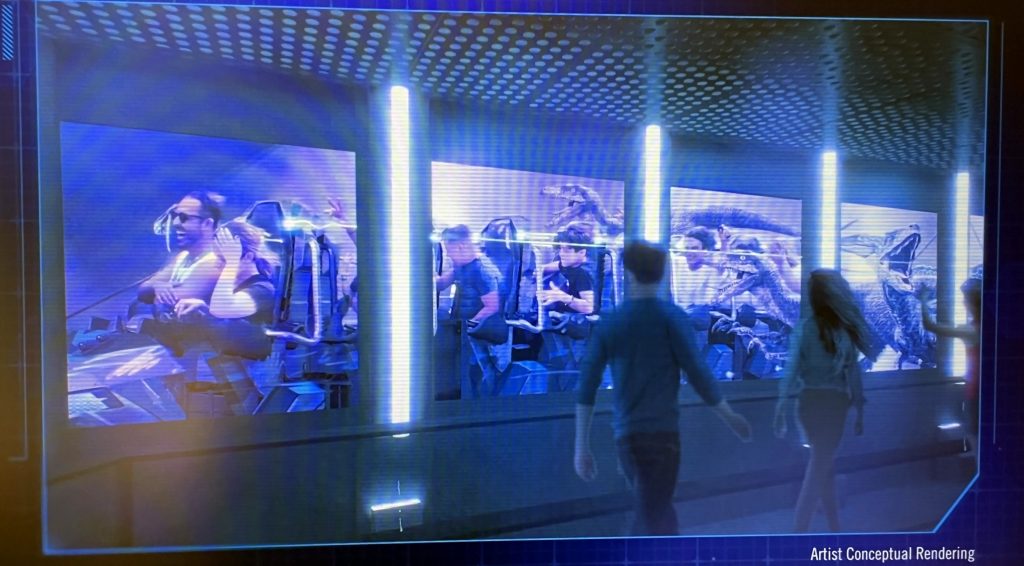
Concept art for the window effect, From: Peacock TV
While waiting in the queue for the VelociCoaster, you’ll pass by a series of windows that look into the ride’s second launch tunnel. This is where the trains are launched up to 70 miles per hour in the middle of the ride. And yes, the trains you see passing by are 100% real. See the quick video below for an example of how it looks.
This never. Gets. Old.
pic.twitter.com/oJ0y6JcYgV
— Alicia Stella (@AliciaStella) November 8, 2021
According to The Making of Jurassic World VelociCoaster on Peacock TV, the windows are actually high definition transparent OLED screens, also known as TOLED. The ride designers have said that this attraction is using the first set of this particular type of screens by the manufacturer.
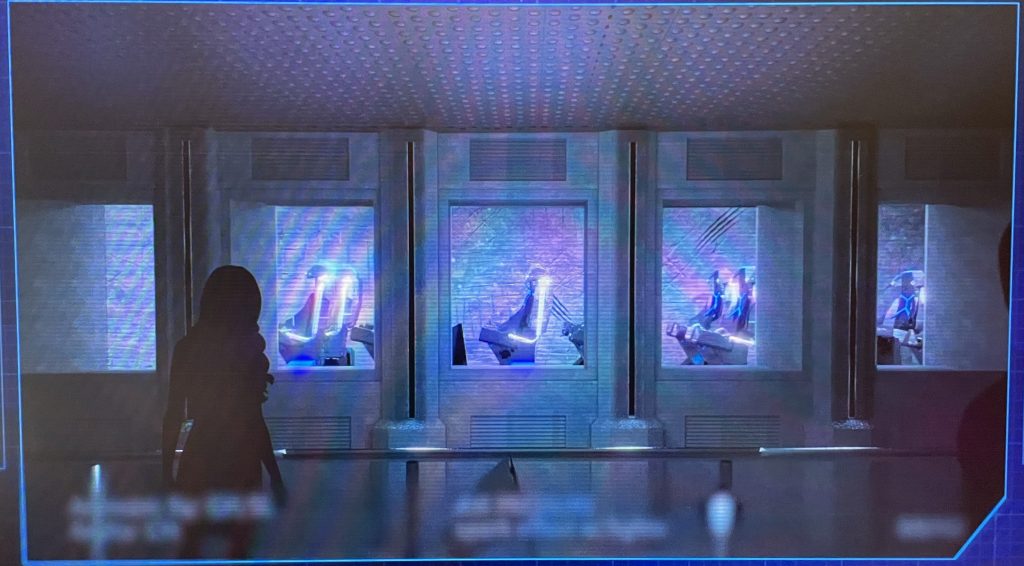
Concept art for the window effect, From: Peacock TV
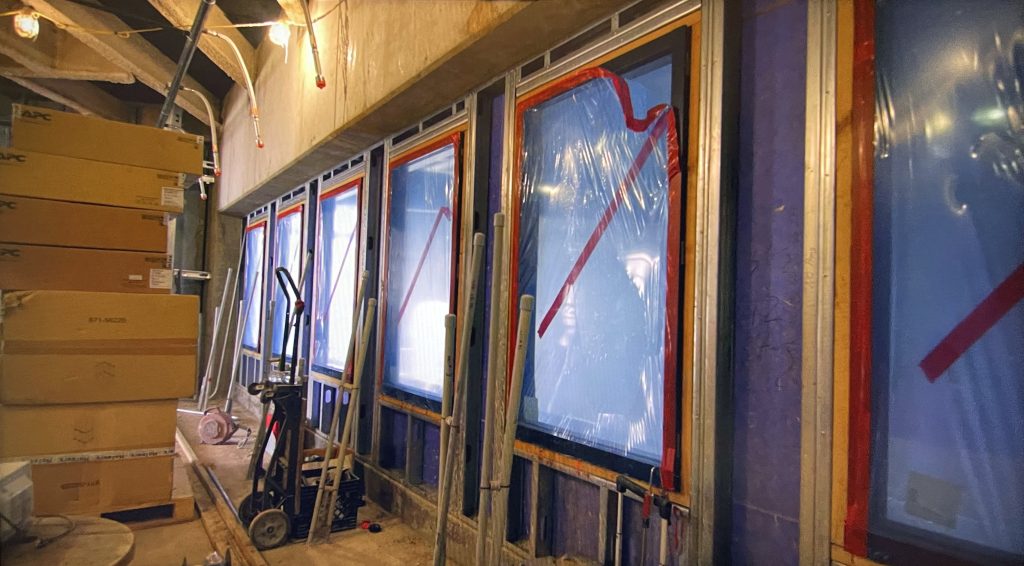
Clear displays being installed during construction, From: Peacock TV
The images displayed on the transparent screens include 6 different raptor animations, which play randomly, triggered automatically when the coaster passes by the windows.
Animators from Industrial Light and Magic were given free rein to create their own animations for the windows, as long as they featured all four of the raptors from Jurassic World: Blue, Charlie, Delta, and Echo.
My Velociraptor animation for the “Velocicoaster” queue! I was given complete animation freedom, so I went with a homage to my favourite raptor shot in the original Jurassic Park. Blue is always a pleasure to animate, can’t wait to see her and the ride in person! #VelociCoaster pic.twitter.com/jAMHhylgpg
— Moragot (@M0RAG0T) May 11, 2021
Looking at a patent from Universal that appears to be related to this particular effect, named Augmented reality system for an amusement ride, we can see that the effects are triggered by a sensor or camera placed near the ride track.
From the patent:
The augmented reality system may include a transparent display located generally between a viewing area and a ride area (e.g., ride an area with a ride path) of the amusement ride system. The amusement ride system may also include a ride vehicle that moves along the ride path adjacent to the transparent display. The transparent display may provide a set of augmented reality images or an augmented reality video (e.g., motion graphics) for viewing from the viewing area.
In addition to explaining how the effect works, the patent also explains how the graphics seen on the windows could appear to interact with the ride vehicle, something we did not see in the final version.
The objects may appear to interact and move with the ride vehicle. As such, the guest positioned within the viewing area may view the ride vehicle and the depicted objects moving and/or interacting with the ride vehicle or guests in the ride vehicle.
Now, in case you were wondering why the coaster trains appear to be computer generated, just like the raptors, I believe there are a couple factors at play here. And again, yes, that is really the roller coaster train passing by the windows. You can even see the launch fins and track below if you get up close to the windows.
To help make the coaster trains show up to guests watching as it passes, the same sensor that triggers the on screen animations also triggers a lighting cue. These lights blast the left side of the coaster train with bright and bold lighting which ensures it will be visible through the special transparent OLED screens, since they are only about 70% transparent as opposed to regular glass windows.
While riding on the coaster during the day you probably won’t notice the lights coming on as you pass through the tunnel, but you definitely will at night.
Hitting the train with harsh light from the side not only makes it easier to see through the windows, but it also gives the trains an almost flat, 2D appearance, as all of the light is coming from the one side. This helps match the real train’s appearance to the actually flat 2D image of the computer generated raptors that follow.
Another reason our eyes may perceive the train as not real, even though it is, may have to do with the flicker rate of the transparent screens themselves.
Even though they appear transparent, the TOLED screens still have a fixed frame rate that is flashing by, usually too fast for the naked eye, but enough to distort reality when a train zooms by at 70 miles per hour. This effectively makes reality look as though it’s happening at a lower frame rate, (probably 120 fps,) and helps to cause that “fake” feeling.
Other clever steps have been taken to ensure the augmented screens blend well with actual reality. The windows are set further back, and dividers are set up to prevent guests from getting an angled view, which would give away the flat raptor animation effect.
Plus, color-changing LED lights have been strategically placed between each window, facing the guests. They change from blue to red to indicate an incoming train, and then turn off when the raptors run in. The changes in lighting help our eyes adjust to seeing the effect better, as the darker the area, the less semi-transparent the raptors will appear. The LED lights do flicker white to help sell raptor interactions, such as jumping towards us or smacking the windows with their heads.
While it may seem like a simple effect, precise timing for the screen animations, as well as multiple lighting effects, have to come together to pull off this unique aspect of the queue. Couple all of this with an incredibly life-like bass rumble from subwoofers built into the room, and you can really feel it when the raptors run by. They’ve set the scene perfectly to get you ready for your turn on the VelociCoaster.
That’s all for now, but if you’d like to learn more secrets for the Jurassic World VelociCoaster, check out our top ten article here, or the video below. And see the entire Theme Park Facts category for more fun stories about how different rides work.
Subscribe to the news feed or enter your email below to never miss an update. Photos: Alicia Stella, unless otherwise noted

